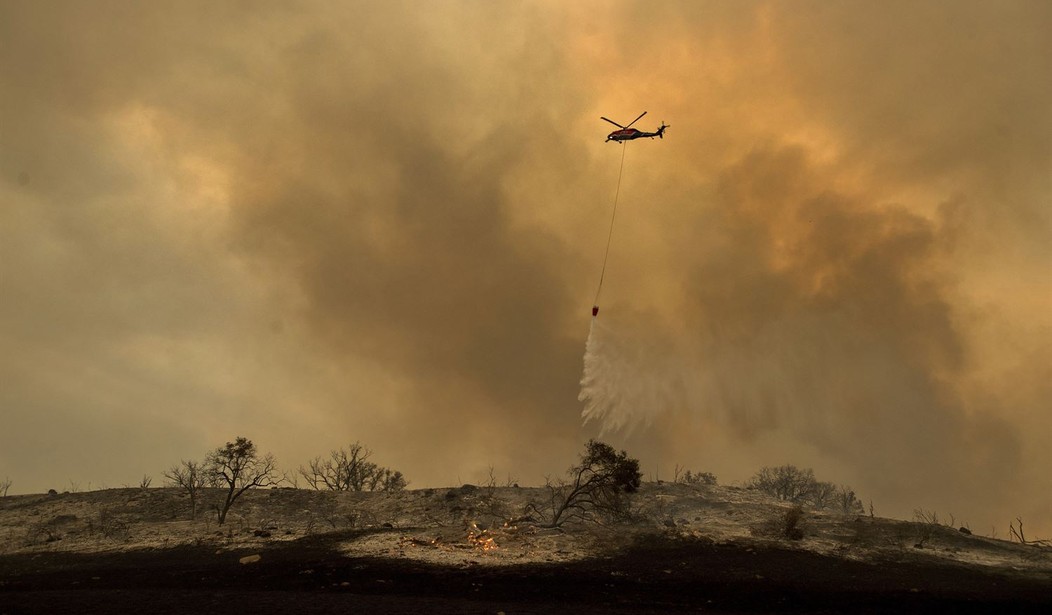Smoke from forest fires arriving from Canada this summer is choking residents of the United States and millions more Canadians in the prairie and eastern provinces. Thick, roiling smoke may pose health hazards to the aged and infirm in both countries.
The origin of the fires traces back to late winter and spring.
An abnormally dry winter left Canada’s boreal forests in conditions ripe for fire outbreaks from various causes, including ignition from lightning strikes in tinder-dry material.
Forested portions of Alberta and British Columbia have been the sites of pine bark beetle infestations that have left millions of acres of dead trees and combustible residue on the ground. Beetle-damaged areas in remote locations are ideal places for conflagrations to start, where effective control is almost impossible. Wildfires in remote areas are often left to burn themselves out or await the arrival of rain.
Likewise, the situation in Ontario, Quebec, and Nova Scotia involves leftover dryness from lack of normal snow-pack and spring rainfall leaving millions of acres susceptible to the fire outbreaks ultimately responsible for the influx of smoke clouds into the United States.
Once more environmental groups are hard at work seizing the opportunity to advance the notion that the wildfires that destroyed the homes of hundreds of California and Oregon residents in 2021, and now in Canada, are evidence for man-made climate change.
It has been shown instead that high summer temperature and dry conditions are the climate norm for portions of the Pacific states east of the Coast Range. Southern California and interior Oregon are seasonally dry and, on average, receive less than 10 inches of rainfall (total precipitation) throughout the year.
Rather than unusual dryness brought on by the effect of some nebulous man-made climate change, it is often government policies that guide or demand strict avoidance of functional fire prevention measures that had helped suppress wildfire in earlier decades and are now outlawed in California. These are the underlying causes of the wildfires.
Recommended
No longer can California homeowners, ranchers, or commercial forest managers conduct sensible brush removal operations or controlled burns to reduce flammable material in vulnerable forest land near their domiciles or farm structures. Controlled burns had played an integral role in controlling the severity of wildfire in California and in many other rural parts of the country since the times indigenous tribes inhabited the land.
But at the insistence of modern-day preservationists, it became no longer an acceptable practice to groom the landscape to prevent outbreaks of catastrophic wildfires, abetted by a plethora of prohibitive laws and regulations.
The Livermore Laboratory study funded by the National Academy of Sciences suggests that increasing carbon dioxide levels derived from the combustion of fossil fuels is the primary culprit responsible for wildfire in North America. Livermore’s computer model outputs serve no instructive purpose since it has become common knowledge that climate models can be (and often are) groomed to yield the results their creators desire.
Reviews of the prevalence of wildfire by hazard expert Dr. Roger Pielke, Jr. show no clear trends to date over the previous hundred years, neither increases nor decreases in the incidence of major wildfires within the natural setting. Attempting to attribute increases in dollar-value losses from natural fires to climate change simply ignores the role of vastly increased casualty losses from private and public property (infrastructure) being destroyed.
The actual reason behind recent outbreaks begins with deficient management practices leading to forest overgrowth and disease, lack of use of fire to clear out excess tinder, pressure by naïve environmental groups to preserve lands in their pre-conceived “primeval” state, pine-bark beetle infestations leaving behind dead trees and combustible litter, drier than normal weather patterns beginning in 2021, lack of preparedness on the part of forestry agencies. The Canadian wilderness, along with burnt over California forests, becomes the unwitting victim.
Stubborn dryness prevails over much of western Canada and the US that can be understood as the result of a tardy reappearance of the El Nino phase of the cyclical ENSO oscillation in the Pacific Ocean. The La Nina (cold surface-water phase in the eastern Pacific) has been slow to decay resulting in less than average moisture being added to the atmospheric streams headed landward and into the Gulf of Mexico. This important effect is entirely lost in media accounts of the Canadian fires.
An estimated 6.7 million plus acres are affected across Canada, including earlier fires in Alberta and British Columbia. Now in Quebec, Ontario, and Nova Scotia, the fires continue to burn as of mid-June. Today, the Midwest once again lies under a gray haze of Canadian smoke.
The current situation begs comparison with the single worst outbreak of wildfire in United States history. The Great Peshtigo fire (October 8, 1871) stands as the worst in terms of loss of life. An estimated 1,500 to 2,500 residents in the lumbering community perished in the firestorm, following four-months without measurable rainfall.
The conflagration roared through the community and several counties north of Green Bay up into Michigan’s Upper Peninsula. This tragedy cannot be attributed to climate change effected by man-made greenhouse-gas CO2 yet to be emitted more than a century later.
North American wildfires have been a common occurrence spanning the millennia since before the arrival of the first settlers from Asia. Repeated periods of drought are evident in tree-ring and lake varve sequences. The current dry periods in the desert southwest are more often the climate norm, than otherwise representing departures suggestive of man-caused interventions.
The earlier fires in Alberta and British Columbia correlate with region-wide infestations of the mountain pine-bark beetle that has killed millions of acres of lodge-pole pines in British Columbia. The pest is aided by overcrowding of forest stands left unattended, but has been part of that ecosystem for many centuries.
Wildfire is nature’s own way of dealing with over-abundance, whether in standing forests or shrub and grasslands. Regular fire outbreaks reduce the buildup of combustibles, pests and disease vectors, usually before the arrival of a far more intense crown fire with devastating effect on plant and animal life, including endangered plant and animal species.
Native Americans were known to set “controlled burns” during mild weather (low winds and moist conditions) to reduce combustibles that might trigger a conflagration. The indigenous are often wiser than many modern-day experts, who demand our forests and scrub-lands be left to their own devices.
Without benefit of timber harvesting or controlled burns, benign neglect inevitably leads to destructive wildfires, whether set by lightning, careless campers, or sparks from a power line. The act that ignites the fire is less important than the underlying cause connected with derelict forest mismanagement.
Unreasonable demands by groups intending to preserve forest and range lands in a “primeval” state lead to the adoption of unwise management policies by agencies charged with the welfare of the natural order.
Love, absent proper direction, offers no guarantee of a positive outcome.
William D. Balgord, Ph.D. (geochemistry) heads Environmental & Resources Technology, Inc. in Middleton, WI.























Join the conversation as a VIP Member